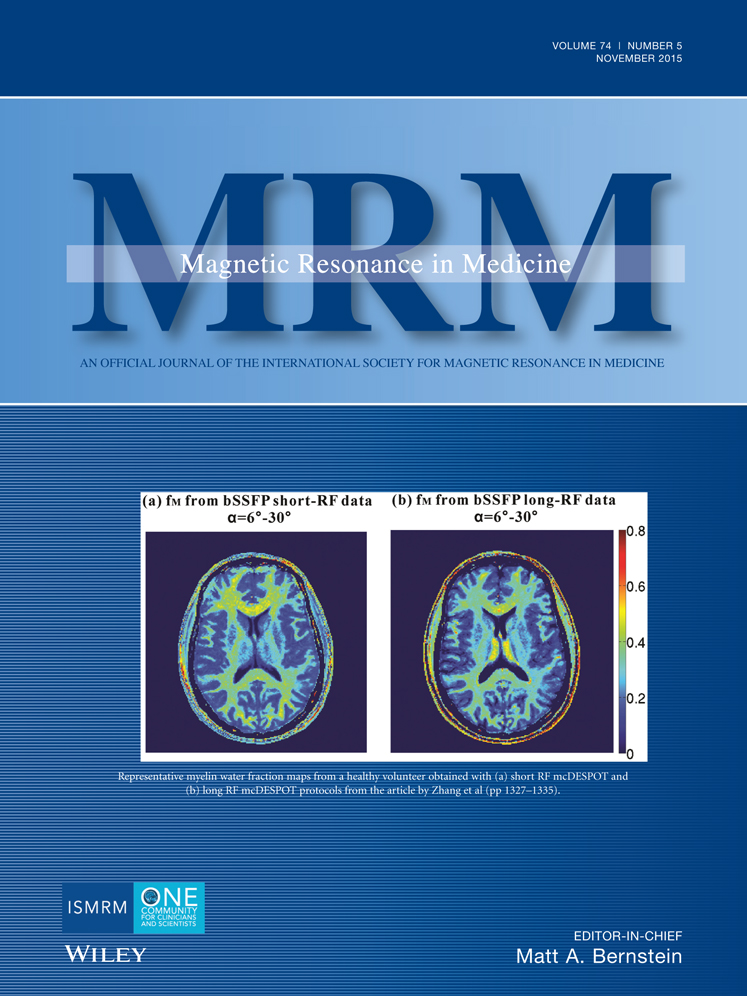Reconstruction of dynamic image series from undersampled MRI data using data-driven model consistency condition (MOCCO)
Part of this study was presented at the 20th Annual Meeting of the ISMRM, Melbourne, Australia, 2012 (Abstract 13).
Abstract
Purpose
To accelerate dynamic MR imaging through development of a novel image reconstruction technique using low-rank temporal signal models preestimated from training data.
Theory
We introduce the model consistency condition (MOCCO) technique, which utilizes temporal models to regularize reconstruction without constraining the solution to be low-rank, as is performed in related techniques. This is achieved by using a data-driven model to design a transform for compressed sensing-type regularization. The enforcement of general compliance with the model without excessively penalizing deviating signal allows recovery of a full-rank solution.
Methods
Our method was compared with a standard low-rank approach utilizing model-based dimensionality reduction in phantoms and patient examinations for time-resolved contrast-enhanced angiography (CE-MRA) and cardiac CINE imaging. We studied the sensitivity of all methods to rank reduction and temporal subspace modeling errors.
Results
MOCCO demonstrated reduced sensitivity to modeling errors compared with the standard approach. Full-rank MOCCO solutions showed significantly improved preservation of temporal fidelity and aliasing/noise suppression in highly accelerated CE-MRA (acceleration up to 27) and cardiac CINE (acceleration up to 15) data.
Conclusions
MOCCO overcomes several important deficiencies of previously proposed methods based on pre-estimated temporal models and allows high quality image restoration from highly undersampled CE-MRA and cardiac CINE data. Magn Reson Med 74:1279–1290, 2015. © 2014 Wiley Periodicals, Inc.




